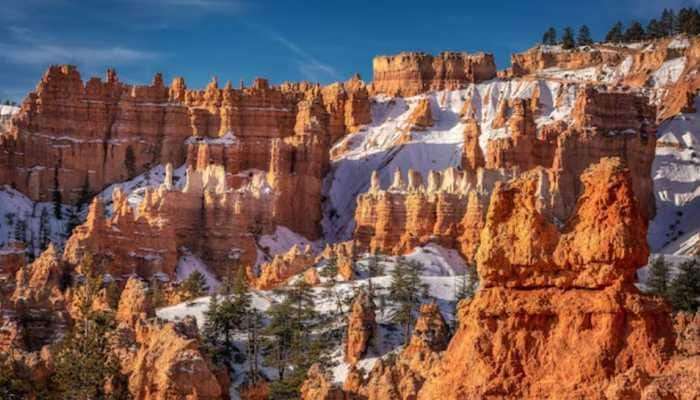There's still some liquid on planet Ceres, says NASA
The planet may have had a global ocean in the past but experts now believe that Ceres' crust is a mixture of ice, salts and hydrated materials that were subjected to past and possibly recent geologic activity
Trending Photos
)
New Delhi: NASA scientists believe that dwarf planet Ceres may still have some liquid water underground.
The planet may have had a global ocean in the past but experts now believe that Ceres' crust is a mixture of ice, salts and hydrated materials that were subjected to past and possibly recent geologic activity, and that this crust represents most of that ancient ocean.
The second study builds off the first and suggests there is a softer, easily deformable layer beneath Ceres' rigid surface crust, which could be the signature of residual liquid left over from the ocean, too.
"More and more, we are learning that Ceres is a complex, dynamic world that may have hosted a lot of liquid water in the past, and may still have some underground," said co-author of the studies Julie Castillo-Rogez from NASA's Jet Propulsion Laboratory, Pasadena, California.
Landing on Ceres to investigate its interior would be technically challenging and would risk contaminating the dwarf planet.
Instead, scientists use Dawn's observations in orbit to measure Ceres' gravity, in order to estimate its composition and interior structure.
The first of the two studies, led by Anton Ermakov, a postdoctoral researcher at JPL, used shape and gravity data measurements from the Dawn mission to determine the internal structure and composition of Ceres.
The measurements came from observing the spacecraft's motions with NASA's Deep Space Network to track small changes in the spacecraft's orbit.
This study was published in the Journal of Geophysical Research: Planets.
The second study, led by Roger Fu at Harvard University in Massachusetts, investigated the strength and composition of Ceres' crust and deeper interior by studying the dwarf planet's topography.
(With IANS inputs)
Stay informed on all the latest news, real-time breaking news updates, and follow all the important headlines in india news and world News on Zee News.
Live Tv







)
)
)
)
)
)
)
)
)
)
